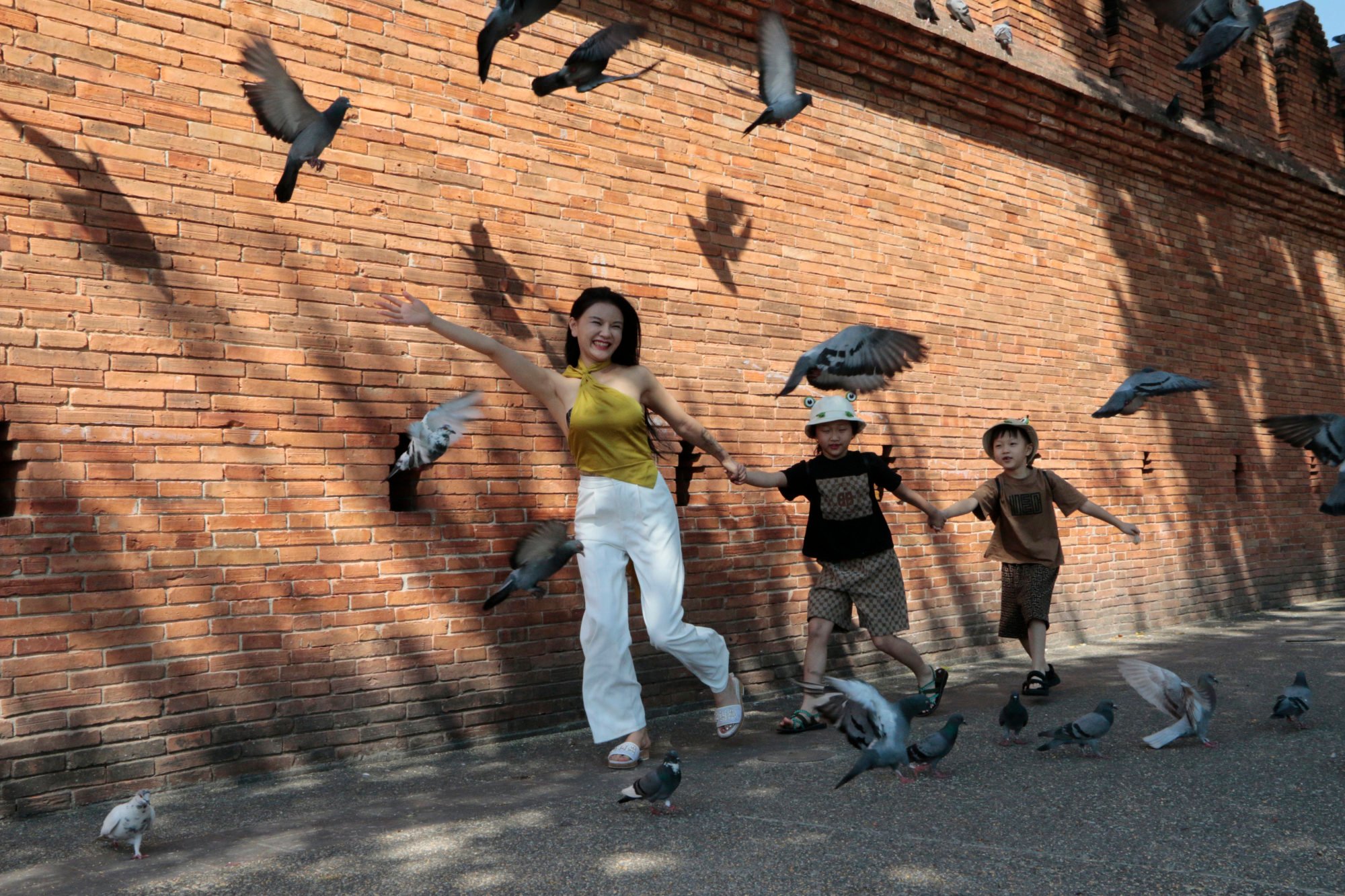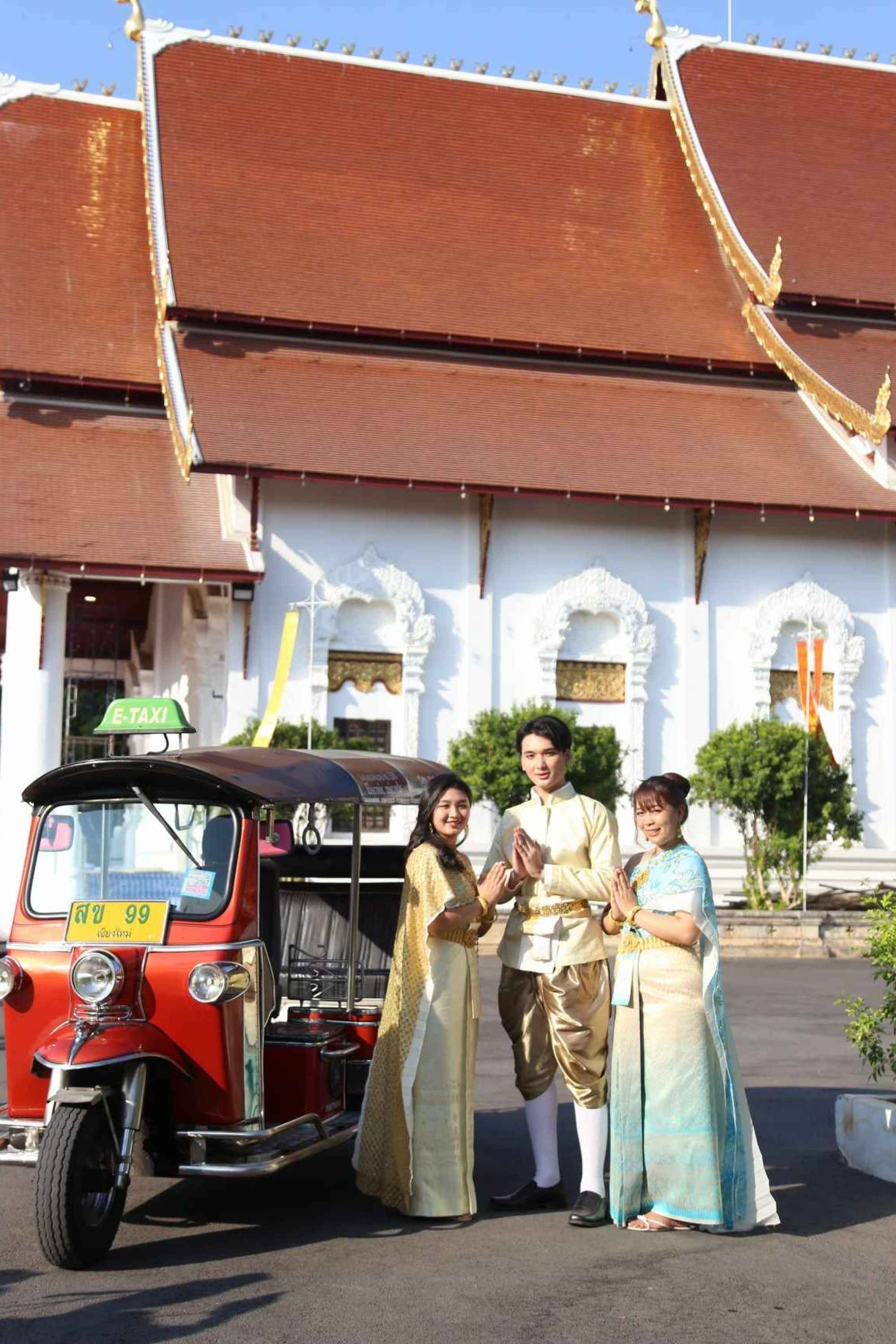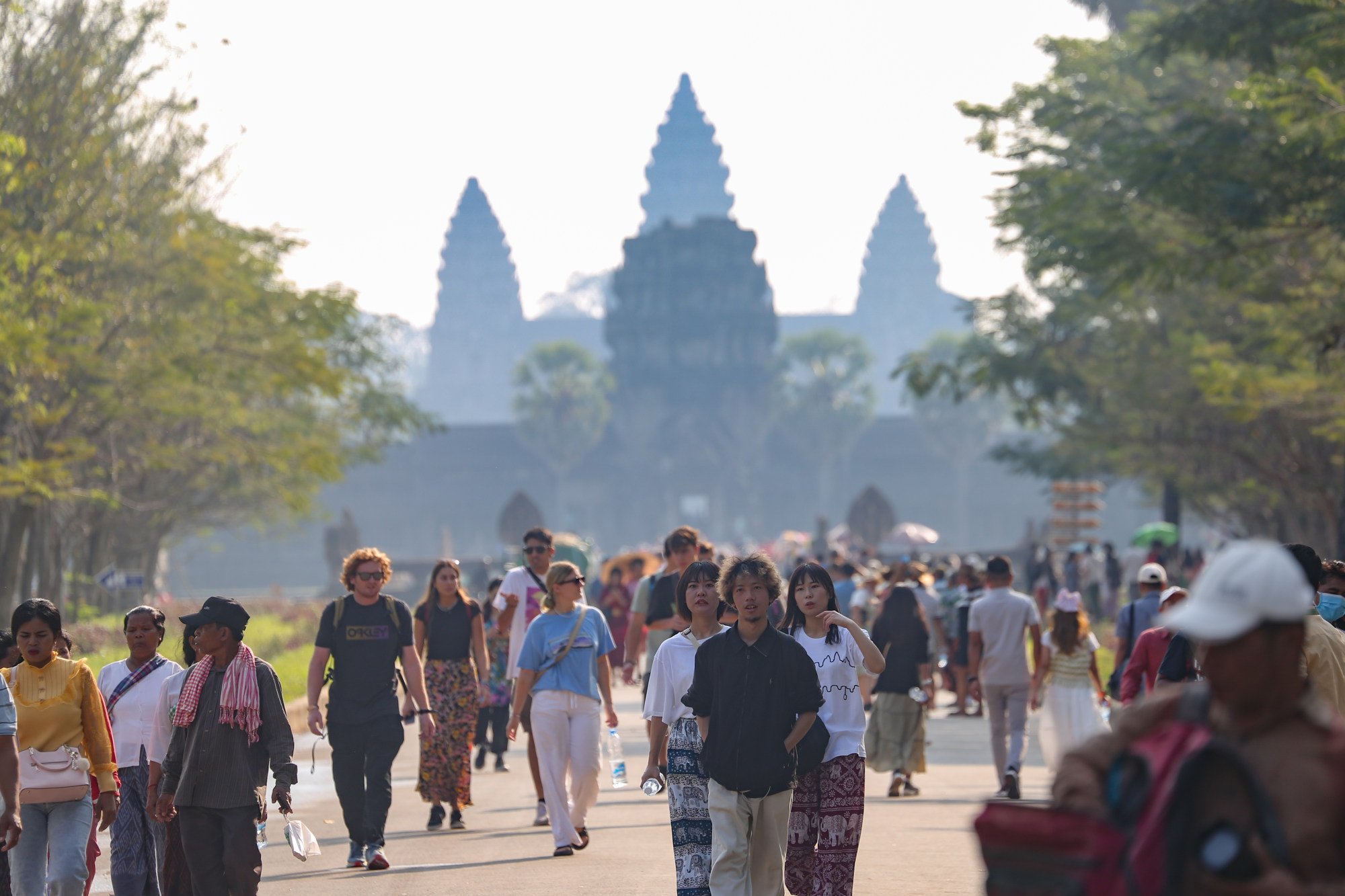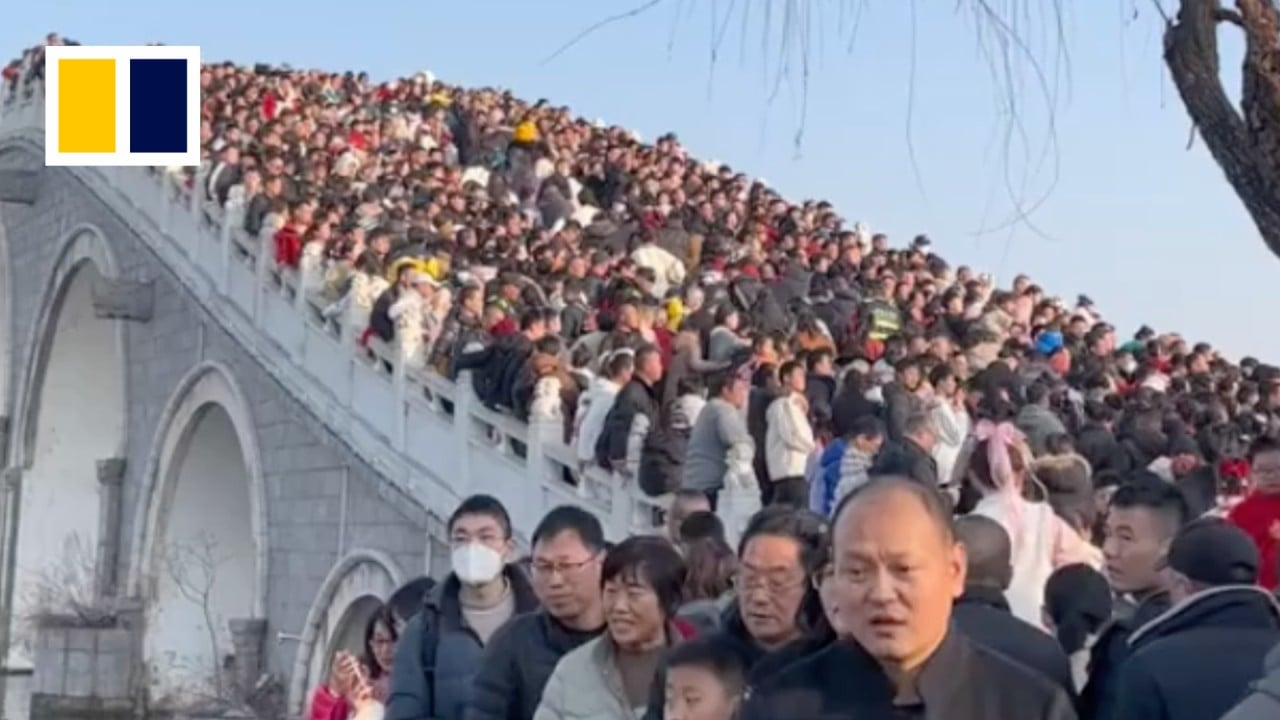
Southeast Asia holds its breath for Chinese tourists’ long-awaited return: ‘this year will definitely be stronger’
- Across the region, arrival numbers for Chinese visitors are still way down on pre-pandemic levels, but there are some bright spots on the horizon
- In Thailand, big tour groups are out in favour of a pick-and-mix of independent travellers and families – though ‘zero-dollar’ tours may make a return
On a recent weekend at the 16th century Tha Phae Gate in Chiang Mai, Chinese influencers could be seen dressed in elegant evening gowns, scattering corn kernels to draw in pigeons that were startled almost as soon as they’d landed, their fluttering wings creating the perfect wistful social-media moment framed by an ancient monument.

“Ninety-per cent of my customers are Chinese,” said Picharnyut Rodjananon, 44, one of the photographers capturing the scene. “This year is the best by far [since the pandemic] as there are more Chinese tourists coming in and they just spend more. They don’t bargain or complain …. they only want me to take more photos for them. It’s a great part-time gig.”
Chinese tourists skip Australia, embrace Singapore, Thailand’s visa-free travel
By the end of this year, Thai authorities are optimistic that a record 40 million visitors will have arrived from overseas – with the number of Indian, Korean and European tourists also surging – surpassing the pre-pandemic tally and cementing Thailand’s status as the undefeated champion of Southeast Asian tourism.
Economists at HSBC said in a research note last month that they believed “Chinese citizens are still willing to spend on travel-related experiences” despite the “macroeconomic headwinds” at home. “We think travel-related spending could continue to outpace … overall domestic consumption,” they said.

Chinese visitors slow to return
Last year, only 3.5 million Chinese tourists visited Thailand, while the number in Malaysia was even more paltry: a little under 1.5 million, less than half the 3.1 million who went in 2019 and a far cry from the 5 million target set by the government for 2023.
In total, Malaysia welcomed some 20.1 million foreign visitors last year, earning the country 71.3 billion ringgit (US$15.1 billion) in tourism receipts, according to data from Tourism Malaysia. That’s double the number of arrivals in 2022, when just 28.2 billion ringgit in tourism revenue was recorded, but still a far cry from the record 26.1 million tourists who spent 86.1 billion ringgit in 2019.
A confluence of factors have kept Chinese tourists away, insiders say, ranging from a faltering domestic economy, to the lack of flights on offer from pandemic-battered airlines, and safety fears that are being magnified by social media.
“What we learned in 2023 was that the recovery of China’s outbound travel was much slower than Southeast Asian destinations expected,” said Gary Bowerman, the Kuala Lumpur-based director of tourism analysis firm Check-in Asia.
“We will find out who the ‘new’ Chinese traveller is by the end of 2024. But this year will definitely be stronger, we are already seeing some different trends. The value-conscious travellers are still there, as well as group travel, but also a younger market, young couples, business travellers. It’s very diverse.”
We will find out who the ‘new’ Chinese traveller is by the end of 2024. But this year will definitely be stronger, we are already seeing some different trends
That diversity plays out nightly in Chiang Mai, where hotpot restaurants fill up with older visitors as the younger crowd are drawn to the chic Thai restaurants, cocktail bars and live music events that have transformed the city’s reputation from backpacker haven into stylish weekend getaway.
“Night tourism, the night economy is something to think seriously about,” Bowerman said of the city’s pull factors for young Chinese tourists.

But like many Southeast Asian cities with only a handful of air links to China, Chiang Mai has yet to see Chinese visitor numbers rebound to pre-pandemic levels.
“The issue is flight arrivals, airport capacity as well as fewer big tour groups.”
The art of a good Thai massage: satisfaction for US$5 in Chiang Mai
A long-stalled second terminal at Chiang Mai should be complete within the next three to four years, tourism chiefs say, doubling potential tourist arrivals to 16 million – in a city with less than a quarter million residents.
“The hope is to make Chiang Mai become a regional hub, so Chinese tourists can drive down, park their car and use the airport as a hub to fly off to different destinations across Thailand and the wider region,” Supamit said.
But is momentum building?
There are other bright spots on the horizon, with business travel from mainland China beginning to return – even if overall outbound travel numbers are still down from where they were pre-pandemic.
Airport lounge visits by mainland Chinese customers were six times higher last year than the year before, according to Todd Handcock, global chief commercial officer and Asia-Pacific president at Collinson, which operates the Priority Pass lounge-access programme.
“This upwards trajectory is something that has continued over the recent Lunar New Year holiday, with Southeast Asia markets such as Singapore, Thailand and Malaysia benefiting,” he told This Week in Asia.
Expectations are for “this momentum to accelerate in the months ahead fuelled in part by visa-free travel programmes across several Asia-Pacific markets and the unleashing of Chinese consumers’ pent-up demand for international travel,” he said.

Competition is also intensifying for Chinese tourists’ money, with tourism chiefs in Thailand, Malaysia and Singapore launching major promotional campaigns.
In Thailand, where tourism authorities are aiming to beat the record 39 million arrivals seen in 2019, attracting back ‘zero-dollar’ tour groups may be the best way to achieve that goal – even as critics say such tours merely puff up the numbers and benefit Chinese operators at the expense of Thai businesses.
Industry insiders expect more tour groups to make a return later this year as airlines sniff out more demand and deepen their routes into China.
“Zero-dollar is not fading out,” Bowerman said. “Last year the airfares were too high to make it work, but as countries lower the barriers of entry you’ll see more.” Travel agents are also expanding “to third-tier Chinese cities of people who have never really travelled before,” he said.
Seoul steps up clampdown on ‘dumping tours’ targeting Chinese visitors
With the Lunar New Year holiday now firmly in their rear-view mirrors, tour guides around Bangkok’s Grand Palace say they are increasingly seeing a new breed of Chinese tourists who are younger, travelling in small groups and have money to spend.
“They tip well, they’re chilled, they do things in their own time.”
Additional reporting by Joseph Sipalan

